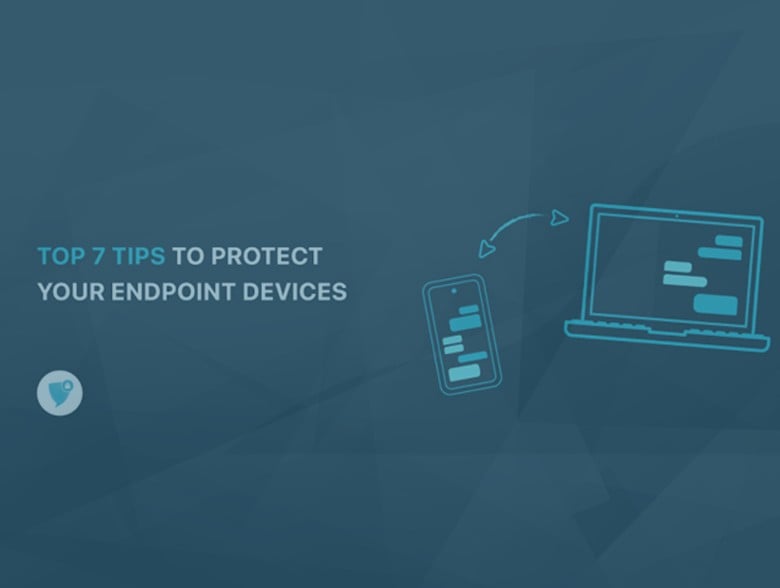By Nicole Allen, Senior Marketing Executive at Salt Communications
The threat landscape has become more sophisticated due to the new hybrid working lifestyle and companies’ use of connected devices has resulted in an ever-increasing number of attack surfaces. Phishing and ransomware assaults are two of the most common and persistent endpoint threats. In order to safeguard all of the new remote endpoints, COVID’s quick change to working from home modified some security objectives. Employees operating their devices outside your network perimeter are, without a doubt, particularly vulnerable to cyberthreats. Organisations should keep in mind, however, that they must also defend their own resources and systems.
How does endpoint security work?
Endpoint security protects end-user devices and the data travelling to and from them by adding additional layers of security. Antivirus and malware protection, malicious activity detection, mobile phishing prevention, internet browsing protection, and data encryption are all examples of this protection.
As discussed above, phishing and ransomware are two of the most common endpoint threats. Phishing attacks can be distributed through genuine applications and used for a variety of goals, including monitoring user activity, collecting login credentials, sending ransomware and other malware, and gaining access to a company’s network.
Ransomware is the number one cyber threat to businesses, according to Secureworks researchers. These attacks are raising the stakes by creating a high demand for stolen credentials and data, as well as broadening the toolkit of threat actors. Since the early days of ransomware, threat actors have understood that data is money and have honed their approaches. Ransomware has changed the game, so you’ll need to rethink how you secure your endpoints from this threat.
In order to protect all your employees and organisations as a whole against the latest cybersecurity threats, Salt offers the following recommendations:
- Beware of common web app threats
The presence of software vulnerabilities and threats to online apps is something that all business owners will have to recognise and protect themselves against. A well-functioning web application is frequently backed up by a security infrastructure that includes a number of complicated components. Databases, operating systems, firewalls, servers, and other application software or devices are all included. What most people don’t realise is that all of these components need to be maintained and configured on a regular basis in order for the web application to function effectively.
Directory traversal attacks are still being used against insecure web apps, allowing attackers access to sensitive data on the server hosting the online service. In the end, the attacker may gain access to sensitive data or perhaps complete control of the system. Administrators can reduce the risk of these attacks by updating their web application and server software on a regular basis and using intrusion prevention systems to secure their servers.
- Have a data access policy
Many firms lack the simplest data storage, access, and usage protocols. Any organisation that wants to protect its data must define the data classification levels. In the case of personal or financial data, for example, data can have public, limited, or critical access. Since not every employee in a firm needs access to all of the company’s data, a data storage strategy is more than merely encrypting data and hoping for the best. That’s why an effective data storage strategy should include access restrictions for who can access and use data, as well as for how long.
Each type of data should be defined in terms of which workers and departments have access to it. User authentication mechanisms, such as two-factor authentication, can be used to accomplish this. As well as at all times any security breach should be immediately reported to the protocol’s administrators.
- Consider all devices not just one
A device is considered an endpoint if it is connected to a network. With the rise of BYOD (bring your own device) and IoT (Internet of Things), the number of individual devices linked to a company’s network can easily approach the tens (and hundreds) of thousands.
Endpoint security is frequently focused on laptops and desktops, but tablets and smartphones are just as critical. This is particularly true today that the workplace has evolved to more agile working methods. Endpoints (particularly mobile and remote devices) are a favourite target of adversaries because they serve as entry points for threats and malware. Think of the latest wearable watches, smart devices, voice-controlled digital assistants, and other IoT-enabled smart devices as examples of mobile endpoint devices that have evolved beyond Android and iPhones.
As a result, verify that all company-issued devices, including mobile phones and tablets, need to have endpoint protection, and discourage the use of personal devices unless they have suitable company-approved security or communications installed.
- Keep certifications and technology updated
Most businesses resent the numerous procedures required to maintain regulatory compliance, but these restrictions frequently assist businesses in a variety of ways. They aid in the identification of data that could be a target for hackers, as well as the procedures that must be followed to protect this data from cyber-attacks. An organisation can better defend itself from costly data breaches by implementing suitable compliance rules.
Data integrity and reliability are also improved by adhering to compliance rules. While many standards are focused on data security, others maintain business continuity so that your company can respond promptly to a crisis, both physically and online. Furthermore, the standards benefit employees and customers by improving the ethics employed to operate the company and to retain data.
Government regulations, industry standards, and software licence agreements must all be followed by all enterprises. That means you need to know where all of your endpoints are, what’s running on them, and how they’re used. Ensure that your company’s endpoints are patched on a regular basis, and that all licensing adheres to the most recent compliance and regulatory standards.
- Update your security and recovery plans on a regular basis
It’s also crucial to keep in mind that a security or data recovery plan is a living document that needs to be updated on a regular basis. Developing a solid disaster and security recovery plan is a time-consuming process that delves into the nitty gritty of your business and how you’ll handle a worst-case situation. It has numerous business-critical components, and collaboration with third-party experts should be explored in order to achieve the best-fit approach.
Reviewing your security and disaster recovery strategy on a regular basis is essential for ensuring that it accurately depicts your environment and responds to the risks and repairs required for business continuity. If you’ve added additional mobile, IoT, or on-premise resources, update your security and disaster recovery plans to reflect any new or changed network infrastructure.
- Educate all employees on the risks
In your IT environment, your employees are the most common attack vector. It’s the motivation behind phishing attacks, email attacks, and other forms of cybercrime. Employees might thus be your biggest weakness or greatest strength in terms of cybersecurity, if you follow that logic. It all boils down to the education you provide them.
As a result, you must do proper staff endpoint training. For the record, this does not imply that you should meet every six months or even every quarter. Instead, make it a regular occurrence, such as a monthly or bi-weekly meeting or (for remote workers) some kind of training programme. Education is useless if it isn’t reinforced on a regular basis, and especially if it isn’t adjusted as new threat intelligence emerges.
Every employee’s actions play a critical role in guaranteeing your network’s security. Employees can do a lot to help, whether it’s not clicking on a phishing link or choosing a more unique password. Since many employees are unaware of the dangers, it is essential to educate them on fundamental security practices.
- Have a secure communications system for all endpoint devices
With an ever-increasing number of mobile users needing access to sensitive data, your company faces new security concerns linked to endpoint security every day. Protecting your data, which is likely your most valuable asset, with a secure communications system has numerous advantages.
Having secure communications enables professionals to conduct secure calls and message threads while maintaining complete communication privacy. Salt Communications, for example, protects your company’s data from attackers from outside your organisation. Organisations will be able to maintain control over their communications and feel secure in any event that arises during their day-to-day operations. As well as having complete administrative controls for monitoring users, tracking activities, and executing corporate policies in order to accomplish complete endpoint security, regulatory compliance, and business improvement at the bottom line.
Beyond the endpoint
Endpoint threat protection and visibility are essential for detecting threats in your company, but there will always be gaps due to unknown or unprotected endpoints. Endpoint telemetry, when paired with regularly updated threat information and data from network and cloud security controls, gives you a more complete picture of potential threats to your business.
Maintaining cybersecurity in the face of COVID-19-driven organisational transformation can aid in the prevention of phishing and ransomware attacks. Remote working is a growing trend that shows no signs of slowing down. To safeguard your organisation and cut down on wasted staff hours each year, you need effective detection and protection on these remote endpoints.
As a precaution, verify that all company-issued devices, including mobile phones and tablets, have endpoint protection. Feel free to contact Salt to secure your communications with our award winning secure communications system which enables professionals to conduct secure calls and message threads while maintaining complete communication privacy.
If you require any additional assistance, please contact our experts for more information on this subject at [email protected] or to sign up for a free trial of Salt Communications or to speak with a member of the Salt Communications team.
About Salt Communications
Salt Communications is a multi-award winning cyber security company providing a fully enterprise-managed software solution giving absolute privacy in mobile communications. It is easy to deploy and uses multi-layered encryption techniques to meet the highest of security standards. Salt Communications offers ‘Peace of Mind’ for Organisations who value their privacy, by giving them complete control and secure communications, to protect their trusted relationships and stay safe. Salt Communications is headquartered in Belfast, N. Ireland, for more information visit Salt Communications.
About the Author
 Nicole Allen, Senior Marketing Executive at Salt Communications. Nicole has been working within the Salt Communications Marketing team for several years and has played a crucial role in building Salt Communications reputation. Nicole implements many of Salt Communications digital efforts as well as managing Salt Communications presence at events, both virtual and in person events for the company.
Nicole Allen, Senior Marketing Executive at Salt Communications. Nicole has been working within the Salt Communications Marketing team for several years and has played a crucial role in building Salt Communications reputation. Nicole implements many of Salt Communications digital efforts as well as managing Salt Communications presence at events, both virtual and in person events for the company.
Nicole can be reached online at (LINKEDIN, TWITTER or by emailing [email protected]) and at our company website https://saltcommunications.com/


